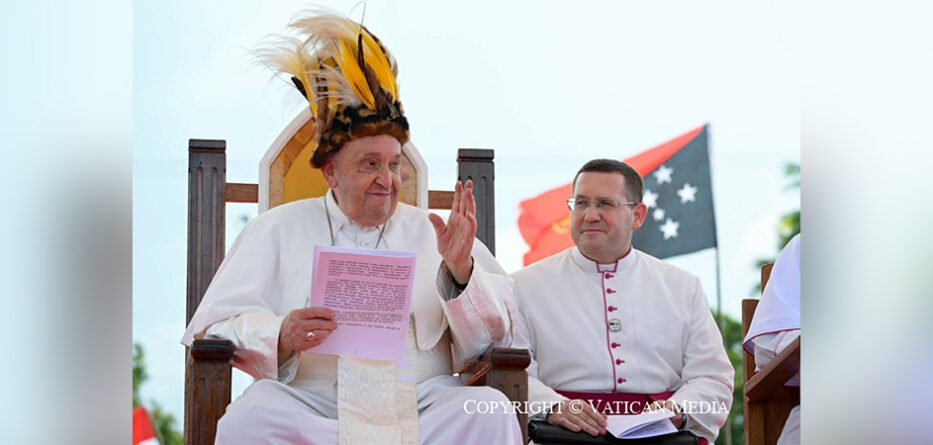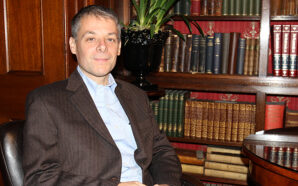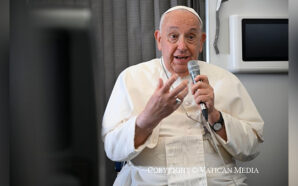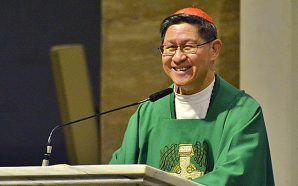Pope Francis concluded the longest trip of his papacy September 13. In Southeast Asia and Oceania, the 87-year-old pope has emerged as a key figure of the Global South.
The Airbus A350 chartered to return Pope Francis to Rome departed September 13, marking the end of a grueling marathon of 32,800 kilometers across Indonesia, Papua New Guinea, East Timor, and finally, Singapore, where the pope appeared exhausted during the final Mass he presided over the previous day.
His long stay in Southeast Asia and Oceania was a tour de force. For 12 days, cameras worldwide filmed a pope, albeit in a wheelchair, who held his own until the final leg. “I feel like we’re more tired than he is,” whispered a member of his delegation, over 20 years his junior, after a giant Mass held under the blazing sun in Dili (East Timor) September 10, attended by 600,000 people—nearly half the population.
Physically, the Jesuit pope took a risk over the past two weeks. Pastorally, he mostly reiterated ideas expressed throughout his papacy, considering the themes addressed in his 16 speeches.
In Indonesia, he once again called for dialogue with Islam, co-signing a document with the imam of Jakarta’s Great Istiqlal Mosque, Nasaruddin Umar, titled Promoting Religious Harmony for the Good of Humanity. In Papua New Guinea, he encouraged the church to combat poverty by reaching out to “the most disadvantaged urban populations, as well as those living in the most remote and neglected areas.”
In East Timor—where he delivered the most powerful speech of his trip—he urged priests to “never abuse their role.” However, he did not mention Bishop Carlos Felipe Ximenes Belo, the national hero accused of pedophilia, whom the Holy See has sanctioned. Finally, in Singapore, he called for “the protection of migrant workers’ dignity.” On the surface, there was nothing new.
The crocodiles
But to grasp the true significance of this trip, one must take a broader perspective. This journey was much more than just a visit by the pope of Rome to the church’s outskirts. In Southeast Asia and Oceania, Pope Francis was visiting a center, not a periphery.
Four days before his departure, Jesuit Father Antonio Spadaro, undersecretary for the Vatican’s Dicastery for Culture and Education who accompanied him on the trip, compared the pope’s journey on X to that of the Italian Navy’s Cavour aircraft carrier. This was a way to emphasize the strategic, military, and geopolitical importance of the region chosen by the pope—a region where China, the United States, and Japan were vying for influence.
Did this trip concern us? From the first days in Jakarta, it was striking how predominantly Muslim Indonesians perceived Pope Francis. In this country, which hosted the Bandung Conference of decolonized nations 70 years ago, the Argentine pope is particularly popular for his positions on the conflicts in Ukraine and Palestine, which are “non-aligned” with Western diplomatic stances.
On several occasions during the trip, Francis appeared as a leader of the Global South. For instance, during his address in Dili (East Timor), after a Mass on the shores of the Savu Sea, he used a metaphor likely aimed at the influences of the modern Western world. “Be careful! For I have been told that crocodiles come to some beaches,” he told the youth present. “Be careful of those ‘crocodiles’ who want to change your culture, who want to change your history.”
Gold and copper mines
For 12 days, Pope Francis focused less on global issues and more on regional concerns: culture, demography, peace, and resource sharing. In Indonesia, for example, he chose the esplanade of Jakarta’s Great Mosque and the interfaith gathering there to subtly reference “the largest gold mine in the world.” “If it is true that you are home to the world’s largest gold mine, know that the most precious treasure is the determination that differences can be harmonized through concord and mutual respect instead of being a cause for conflict,” he said.
On the island of Java, everyone understood the reference to the massive Grasberg mine in the Indonesian part of New Guinea, operated by the American company Freeport-McMoRan. The mine has displaced thousands of Papuans from their deforested lands.
Another example: in Port Moresby (Papua New Guinea), Francis called on the country’s leaders to “find a definitive resolution” to the issue of the autonomous island of Bougainville. This territory witnessed bloody conflicts until 1998, born out of protests over the minimal financial benefits from the operation of another mine, this time copper, in Panguna. The conflict claimed 20,000 lives.
Some of these regional issues were also religious. Upon his arrival in Papua New Guinea, the pope was not welcomed by the country’s Protestant Prime Minister, James Marape. Marape had toured the island four months earlier with Ted Wilson, an American leader of the Seventh-day Adventist Church.
The pope, who presented himself in Dili as “a pilgrim in the lands of the East,” is well aware of how contested these lands are today. Indonesia is home to 7.41% Protestants (3% Catholics). In Papua New Guinea, Protestants comprise 74% (26% Catholics). In East Timor, other Christian churches account for only 2%, while in Singapore, they are on the rise.
6,000 islands
At nearly every stage of the journey, the pope praised missionary work, albeit in a specific form: de-clericalized, de-Westernized, focused on social action and education, and deeply “inculturated”—adapted to local cultures and languages. In the cathedral of Dili, he seemed to find a kindred spirit in the figure of an 89-year-old Timorese catechist, Florentino de Jesus Martins, whom he listened to passionately as he recounted his 61 years of mission work on the archipelago’s remote roads.
On September 4 in Jakarta, he had asked a catechist to stay by his side for a few minutes after her testimony, prompting the assembly to applaud her. “Catechists are the ones who lead the way,” explained the pope. “Then come the religious sisters—right after the catechists—and then the priests, the bishop. But the catechists are at the front, they are the strength of the church.”
They are indispensable in trying to connect vast territories. The Indonesian church has 2,466 priests, 9,658 sisters, and 21,932 catechists across nearly 6,000 inhabited islands.
Five highlights of the trip
Jakarta (Indonesia): On September 4, the pope called for interreligious dialogue, “which is essential to counter extremism and intolerance, which distort religion and attempt to impose themselves through deception and violence.”
Port Moresby (Papua New Guinea): Alerted to rising violence against women in the country, Francis insisted on September 7 that “tribal violence must stop.”
Vanimo (Papua New Guinea): “Beauty can heal the world,” he said on the edge of the rainforest on September 9.
Dili (East Timor): On September 9, the pope called to address “the phenomenon of emigration,” describing it as “a sign of insufficient or inadequate use of resources.”
Singapore: On September 12, the pope urged against “legitimizing the exclusion of those marginalized from the benefits of progress.”
Reproduced with permission from La Croix International.








